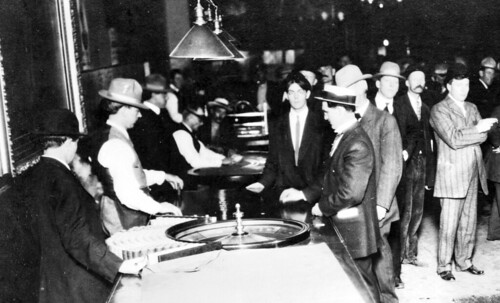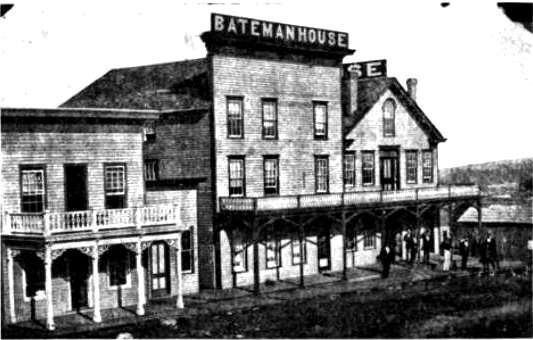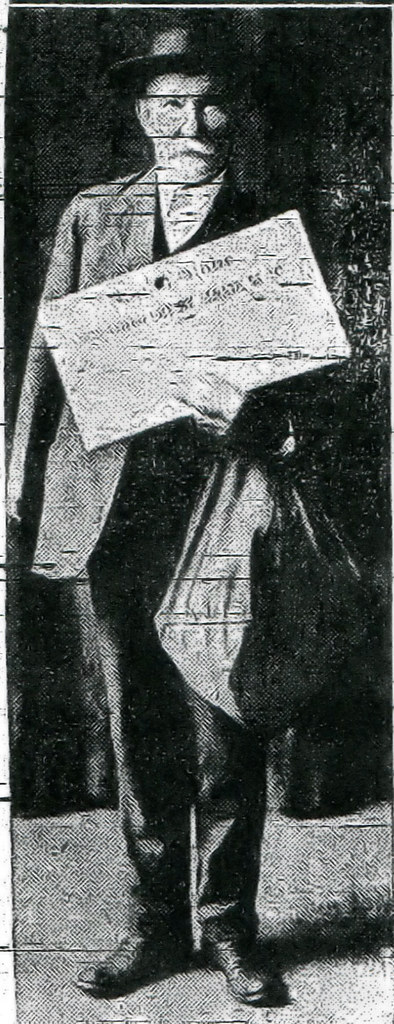Joplin was full of larger than life personalities. “Crazy” Jake Griffith was one of those characters. Unfortunately for Jake, his time in Joplin came to an end in the summer of 1904. Jake, who the Joplin Globe declared had, “graduated from the Nut College on several different occasions,” was found living in a hut on East Seventh Street. Joplin constables Turnbull and Collier took him into custody and escorted him to Missouri State Mental Hospital for the Insane No. 3 in Nevada, Missouri.
Upon his departure for Nevada, the Carthage Evening Press reminisced about Jake. According to the Press, Jake had been institutionalized in several different asylums over the years, but “for some reason [had] always been discharged.”
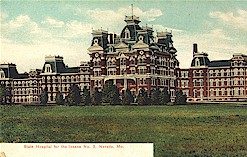
Missouri State Mental Hospital for the Insane No. 3. Via Lyndon Irwin's informative website on Nevada, Missouri.
Jake, however, had not always been mentally ill. In the 1870s, he reportedly owned a small farm west of Carthage, but lost it. He took to the road playing his fiddle at country dances and became one of the most sought after local musicians. Even then he was “peculiar, absent minded, and eccentric.” Jake often drank, but never to excess.
But as the years passed, Jake became more eccentric and was no longer the “well dressed, sporty figure, always welcome at rural ball.” Instead, he became a “slouch, wholly dependent on the charity of friends, sleeping in abandoned shanties, and living alone with his troop of half-starved dogs.” At some point he came into possession of a broken down buggy and a “shambling old horse.” Together Jake, his dogs, and his swayback horse wandered all over Jasper County, picking up nickels whenever he would stop to play his fiddle for onlookers for, “Jake was a good fiddler even in his degeneracy.”
He lived in his buggy which was festooned with scraps of ribbon, string, and carpet. The horse and dogs were skeletal for lack of food despite the intervention of old friends who cared for him when he happened to wander past their homes. Jake was sent to an asylum but subsequently was released. He wandered back to Jasper County and on to Eureka Springs, Arkansas, but locals there put him back on a train to Joplin. After disembarking from the train, Jake made his home in an “old box shanty” and scrounged up food from the back of restaurants. He no longer played the fiddle.
His friends, concerned for his well-being, contacted the authorities to have Jake taken to State Hospital No. 3 for his safekeeping. Jake remained at the asylum until his death in January, 1914 from a cerebral hemorrhage. With his death one of Joplin’s old-time characters faded away, never to be replaced.
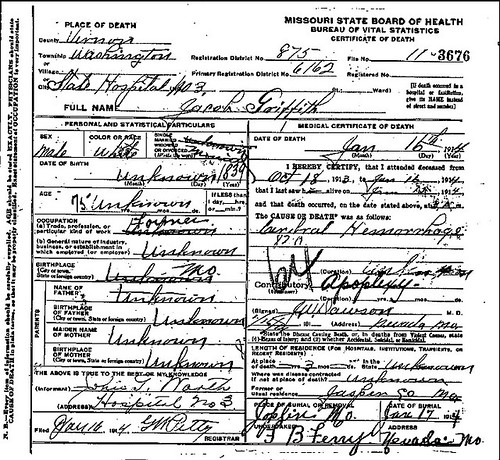
Jake Griffith's death certificate. As the certificate indicates, much was unknown about "Crazy" Jake.
For more photos and images of the Missouri State Mental Hospital for the Insane No. 3, visit www.lyndonirwin.com/asylum.htm. In addition, check out considerable creepy drawings by a patient of the mental hospital.
Sources: Missouri State Archives Death Certificate Database, Joplin Globe
